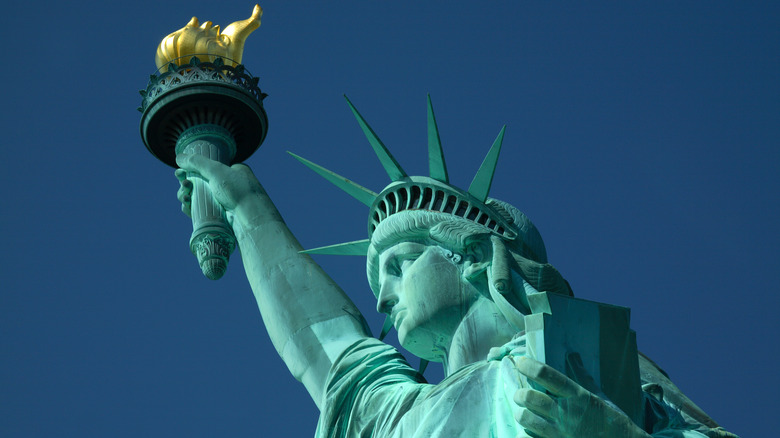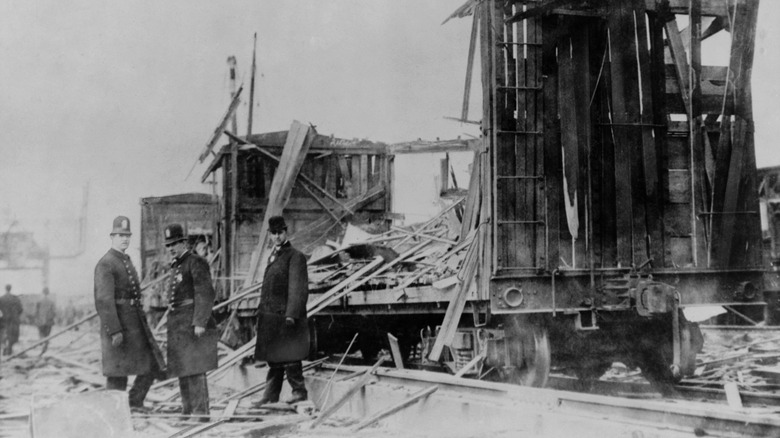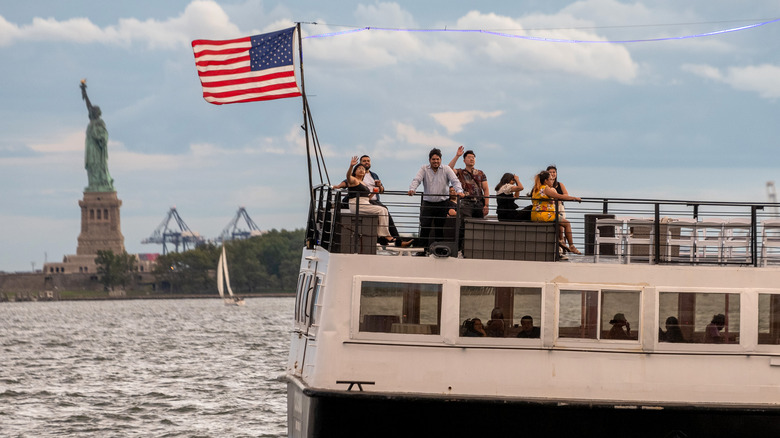The Reason The Statue Of Liberty's Torch Is Closed To The Public
For many people, a trip to New York City isn't complete without a visit to the Statue of Liberty. Located on Liberty Island, the statue is a fixture of New York Harbor and has been since she was dedicated in October 1886. The statue was made by sculptor Frédéric Auguste Bartholdi and engineer Alexandre Gustave Eiffel, who made the Eiffel Tower. It was a gift from France to the people of America, and the copper structure was first completed in Paris and then shipped in pieces to New York. It was a collaborative effort on the parts of both nations. France raised the funds to create the statue, while the United States raised the funds and put in the labor to create her granite pedestal.
Thanks to the Statue of Liberty's proximity to Ellis Island, a small island outside of New York that was used to process immigrants, the statue has become synonymous with freedom and the potential to fulfill the American dream. While certain parts of New York City can be complicated to navigate as a tourist, like the complex subway system or the labyrinth of airports, visiting the Statue of Liberty is relatively easy. It is on its own island, after all, so that's one point for simplicity. Travelers arrive by ferry, either from The Battery in Manhattan or from Liberty State Park in New Jersey, and tour the national park that comprises both Liberty Island and Ellis Island. You can tour inside the statue, but you can't go into the torch.
The bombing that damaged the torch
Back on July 30, 1916, the Statue of Liberty was hit by a nearby explosion that ended up damaging parts of its structure. Not far from the statue, Black Tom Island was being used to create munitions that the United States was sending to England during World War I. Security guards saw fires around the warehouses and shortly after, a huge portion of Black Tom Island exploded, creating so much damage that glass windows in Manhattan shattered. "It was a terrific explosion — the worst that had ever happened in New York," history professor Kenneth Jackson told NBC News. At least five people died, one of them a baby who was thrown from a crib due to the power of the blast. At the time, people thought that the explosion came from negligence on the part of warehouse workers on Black Tom Island. However, years later, it was discovered that German terrorists committed the attack to put an end to the American supply of munitions.
Since the Statue of Liberty was so close to Black Tom Island, the shrapnel from the explosion ended up damaging the torch, made of copper and glass. The damage was so severe that to this day, tourists are not permitted to climb into the torch.
What you can see besides the torch
While tourists can't go inside the Statue of Liberty's torch, they can purchase a ticket to visit her crown. According to the National Park Service, it's necessary to reserve a ticket ahead of time to make this interior excursion of the famous monument, since it's so popular. There is no elevator access, so visitors must be prepared to climb 162 stairs and those with vertigo and claustrophobia are advised against the climb. It's physically demanding and incredibly steep. Once you reach the top, you'll find 25 small windows that are built into the statue's crown that look out onto New York Harbor. Visitors can also explore the pedestal upon which the statue stands.
National Park Service staff are the rare few who enter the torch after climbing a 40-foot ladder for the sole purpose of operating its floodlights. For those who are fond of museums, you can actually view the original glass flame in the Statue of Liberty Museum. In 1984, her flame was replaced with one covered in 24-carat gold, and the original creation was brought indoors. So while you can't climb up inside the torch, you can at least see the original flame.


